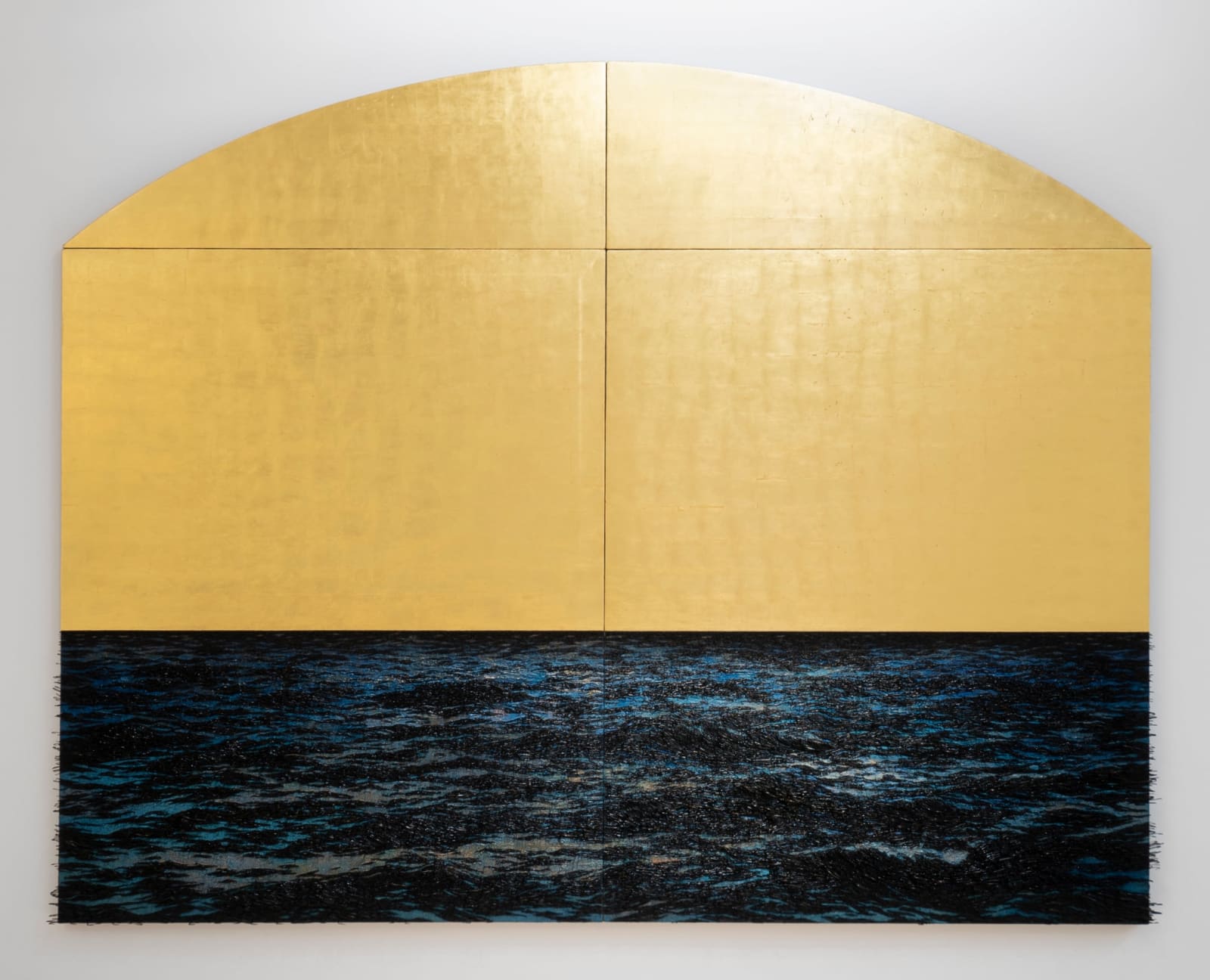
Yoan Capote Cuban, b. 1977
In Requiem (Clamor), Yoan Capote immerses the viewer in a seascape evocative of the artist's native Cuba, conjuring emotions of promise, hope, uncertainty, loneliness, and fear. The tantalising horizon line, depicted with gold leaf—a material steeped in classical artistic traditions—serves as a metaphor for the global migrant crises and the need for spiritual healing amidst ongoing health, political, and environmental challenges. This series marks the debut of gold leaf in Capote’s seascape paintings. The shimmering gold leaf, combined with the monumental scale and the inclusion of fishhooks, imbues the work with a spiritual quality, offering a space for reflection and solace during times of significant upheaval. The sea, a recurring theme in Capote’s oeuvre, symbolises both allure and danger, freedom and isolation, hope and tragedy. In Requiem, these dualities are explored through transcendental meditations on the sublime beauty of the sea, illuminated by a divine golden light. Yet, the sharp, menacing fishhooks, some stained with blood, underscore the perils and impossibilities faced by many Cubans and others around the world in their quest for migration. Throughout art history, gold leaf has symbolised purity, divinity, and the unearthly, as seen in early Renaissance paintings that inspired Capote during his travels in Florence, Italy. Requiem similarly evokes a sense of the sacred, through the application of gold leaf to the textured paint surface which emphasises the play of dappled light dancing on the shifting seas. By juxtaposing gold leaf with thick layers of impasto, Capote explores the inherent fragility of the 'golden dream'—the allure of a distant horizon often fraught with hidden dangers. A classically trained artist deeply influenced by the rich traditions of Edo period Japanese printmaking, 19th-century Romantic landscape painting, and early Renaissance art, Capote reconnects with these historical techniques to render personal and collective memories, dreams, hopes, and fears through a synthesis of past and present, his work revealing the enduring universality and profound spiritual value inherent in the act of painting.










